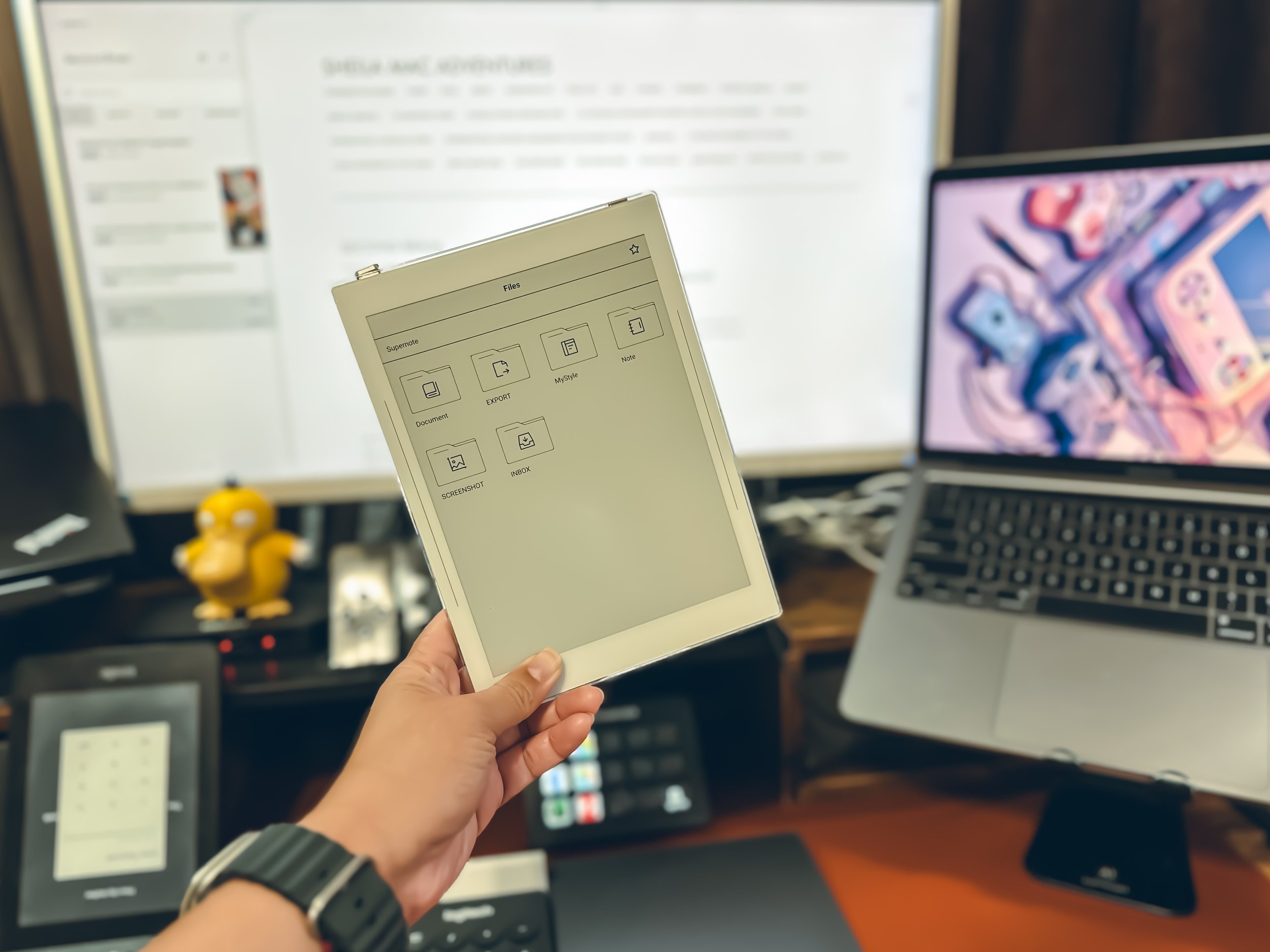Building my Second Brain System and the Workflows: Supernote Edition
Understanding Tiago Forte's Second Brain
Tiago Forte's Second Brain methodology is based on the idea of creating a digital repository for all your ideas, notes, articles, and resources. It aims to externalize your thinking process, allowing you to offload cognitive load and make room for deeper thinking and creativity. The Second Brain consists of four pillars:
Capture: Gather information from various sources, such as articles, books, conversations, and personal insights.
Organize: Categorize and tag the captured information for easy retrieval and reference.
Distill: Establish relationships between different pieces of information to create a web of knowledge.
Express: Review and synthesize the collected information regularly to extract insights and generate new ideas.
Embracing the Second Brain Philosophy
After delving into Tiago Forte’s insightful book, “Building Your Second Brain,” I was inspired to revamp my digital ecosystem. The P.A.R.A. methodology—Projects, Areas, Resources, and Archives—emerged as the cornerstone of my organizational framework. It provided a structured approach to organizing my files, ensuring that no idea or document slipped through the cracks.
Structuring My Supernote
Central to my Second Brain system is my Supernote, serving as the digital hub for capturing, organizing, and accessing information. Here’s how I structured it:
1. Supernote Root Folder: At the core lies the Supernote Root Folder, housing my entire digital universe. I like to keep my Supernote on this view when opening my Supernote.
2. PARA Dashboard: A dedicated dashboard acts as the command center, providing a bird’s-eye view of my organizational structure.
3. Projects, Areas, Resources, Archives: Following the P.A.R.A. methodology, I organized my Supernote into these four key categories, each with its own distinct purpose and hierarchy. I utilize the PARA methodology on the Supernote’s Root Folder like this:
Documents= Areas, Resources, Archives
Note= Projects
4. Subfolders for Specific Topics: Within each PARA folder, I created subfolders for specific topics, ensuring granular organization and easy retrieval of information. Something to keep in mind when creating Subfolders is the organization.
5. PARA Dashboards and Links: To enhance navigation and accessibility, I created PARA Dashboards and sub-Dashboards with interlinked links, providing seamless transitions between related topics.
6. Quick Access and Favorites: Leveraging Supernote’s features, I customized my quick access toolbar and marked certain dashboards as favorites for faster and easier access.
Supernote: The Heart of My Second Brain
While Supernote plays a pivotal role in my Second Brain system, it’s just one piece of the puzzle. My ultimate goal is to achieve seamless interoperability across all my devices, ensuring that I can access critical information whenever and wherever I need it. Whether I’m using my laptop, tablet, or smartphone, the principles of the Second Brain methodology remain constant, empowering me to stay organized and productive across all platforms.
In conclusion, integrating Tiago Forte’s Second Brain methodology with Supernote has revolutionized my digital workflow. By adopting the P.A.R.A. methodology and structuring my Supernote accordingly, I’ve created a cohesive organizational framework that enhances productivity and clarity. As I embark on this journey, I’m excited to explore further optimizations and enhancements, unlocking the full potential of my Second Brain system. Stay tuned for more insights in the upcoming parts of the Second Brain series.
Part 1 of 4 Second Brain Series

